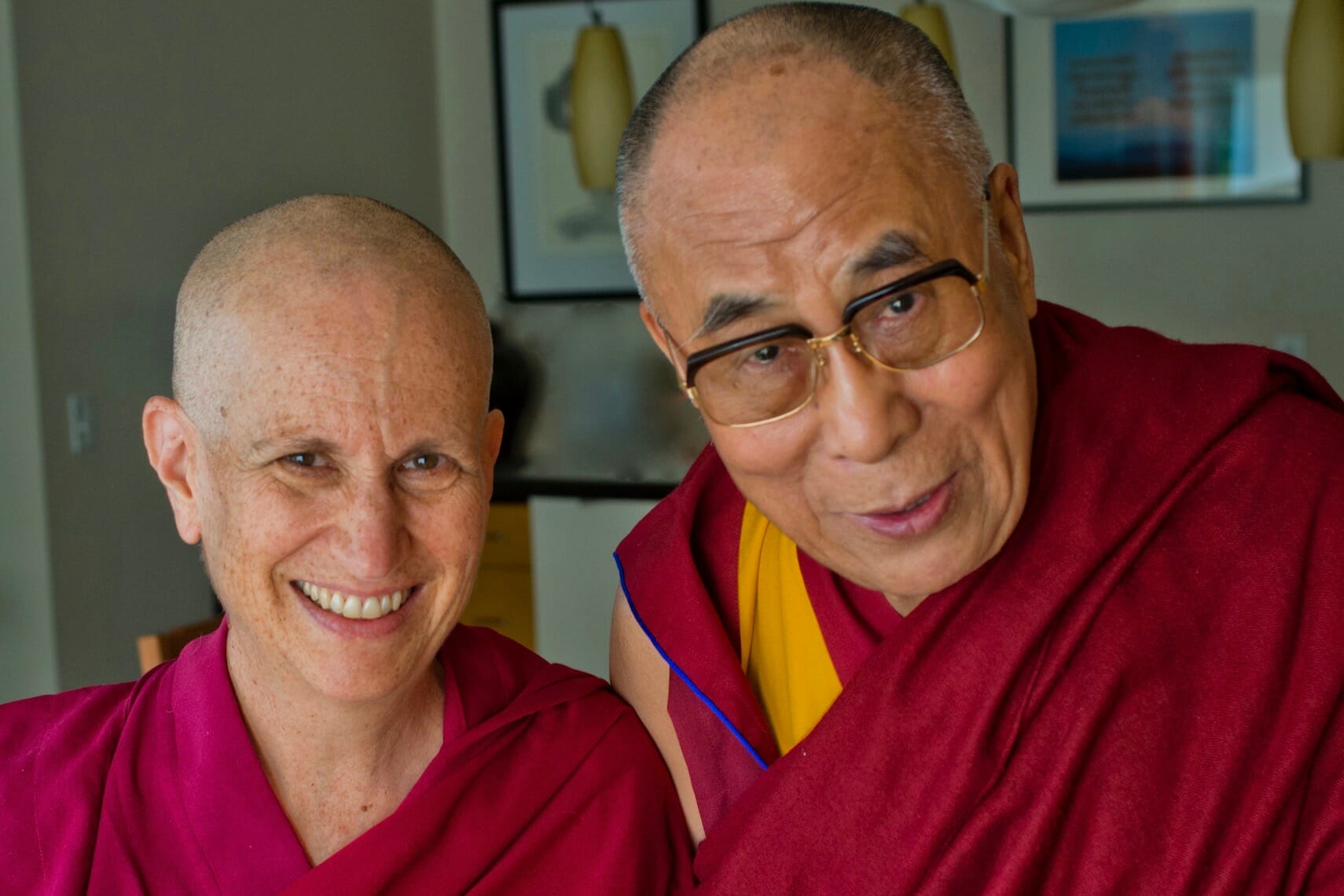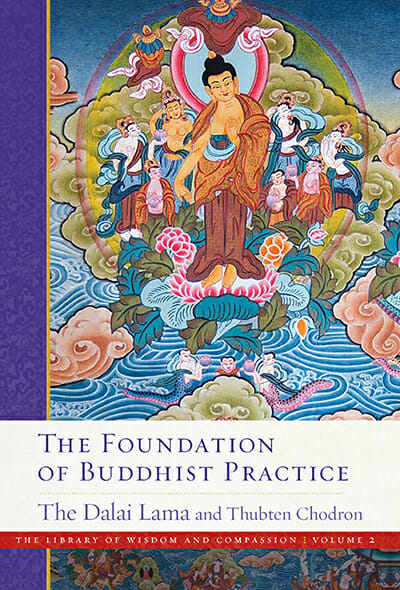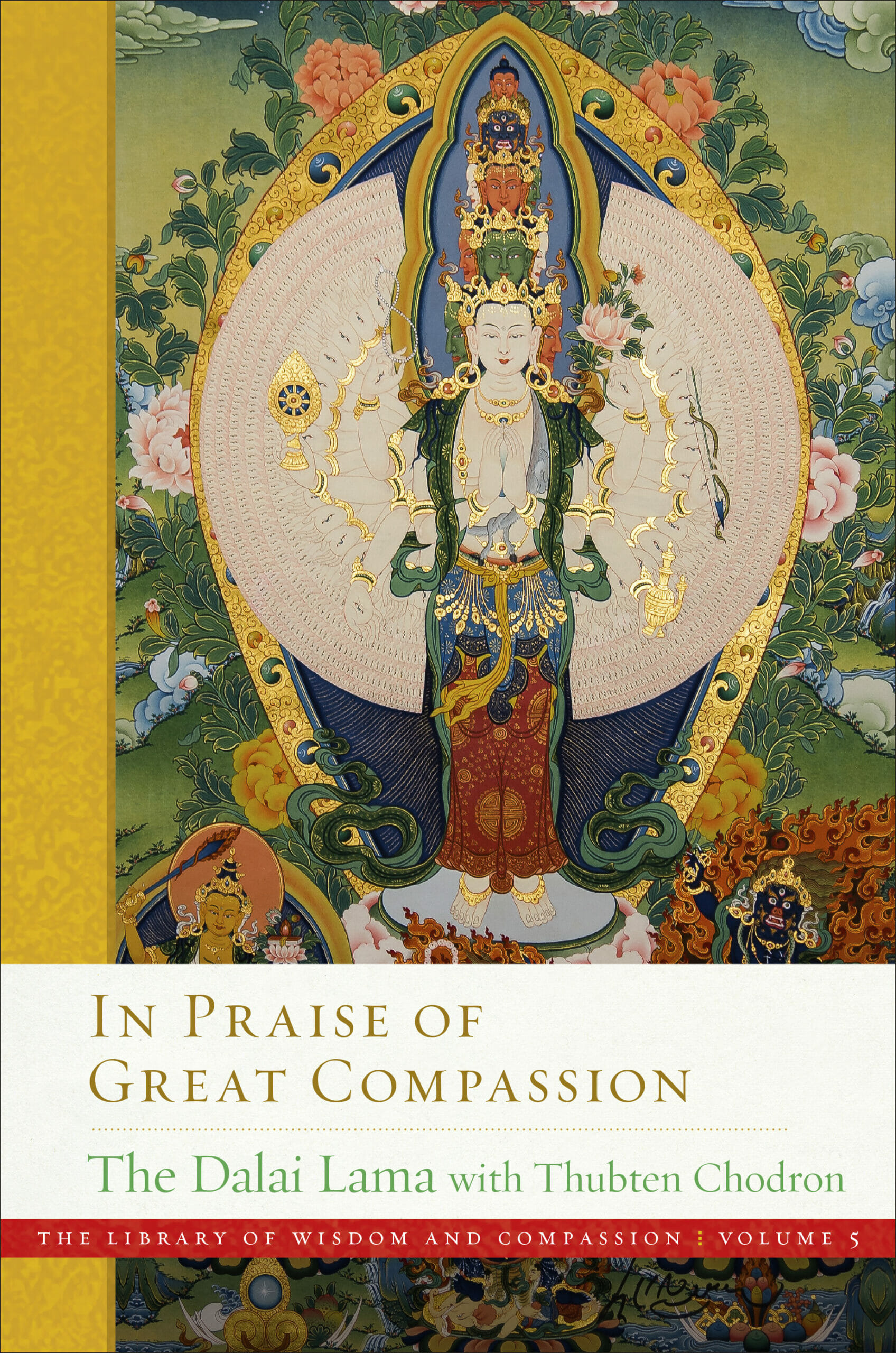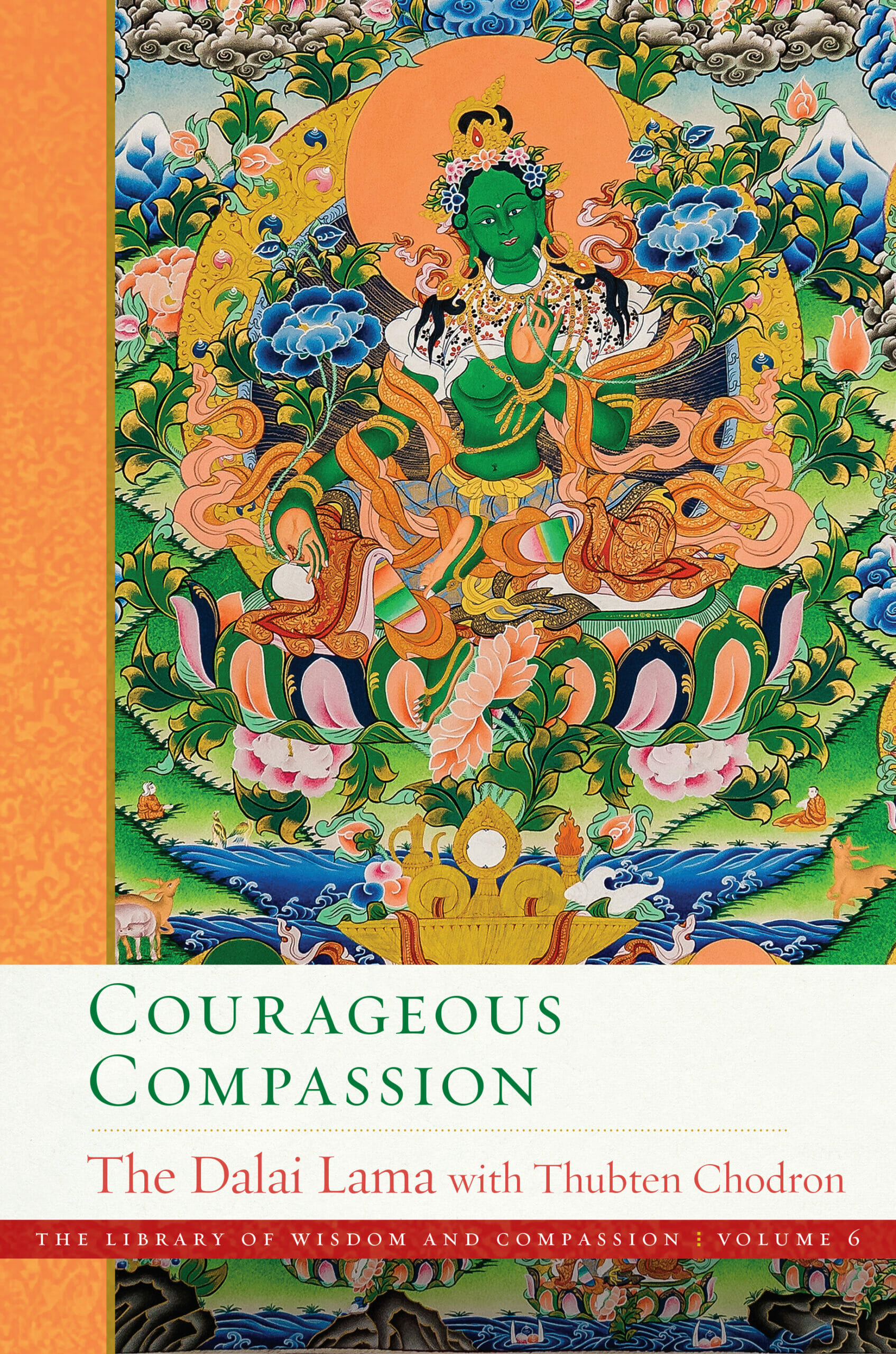The Library of Wisdom and Compassion
Venerable Thubten Chodron is a pioneering American Buddhist nun, and founder of Sravasti Abbey. She has been working on The Library of Wisdom and Compassion book series with His Holiness the XIV Dalai Lama of Tibet now available through Wisdom Publications.
LA YOGA was lucky to get an early look at this extraordinary undertaking, and an audience with the beloved Bodhisattva behind it.
Each Heart
Cheryl Greene grew up outside of Los Angeles, during the Vietnam War. Like many confronted with the mortality of youth, she questioned the purpose of life (and death). “I couldn’t find any answers really in any of the theistic religions, and so, I figured it must have something to do with helping people,” she explains. The seeker became a teacher and got married. The couple returned their weddings gifts to travel through Europe, North Africa and Asia.
Back at home, the newlywed saw a flyer for a Buddhist course. The Tibetan lamas advised students, “You don’t have to believe anything we say. Think about it, if it makes sense to you, accept it. If it doesn’t, leave it aside.” The revered scholar reflects, “What they said really touched my heart.” She started meditating, became Buddhist and realized, “I wanted to become a nun…I thought oh, I really want to devote my life to this.”
The aspirant studied in Nepal, and India, landing in Dharmsala. In 1977, she was given permission to be ordained, and took the novice precepts. In the years since she has studied, taught and started dharma centers in Italy, Singapore, France and the US. She has become known to many as Venerable Thubten Chodron, respectfully referred to in the familiar as “Venerable.”
But First
In 1979, Thubten started attending talks by His Holiness the XIV Dalai Lama of Tibet. She would have appointments to ask him dharma questions, “So that kind of established a personal relationship,“ she says. In the early 90s, there was a conference of Western Buddhist teachers. Chodron recalls, “I had the idea that because we’ve been receiving teachings from Tibetan lamas who didn’t know about Western culture, and yet his Holiness did. And so I thought ‘Gee, it would be really nice if his Holiness wrote a very short text that the Tibetan lamas could use as a root text to teach the Dharma.’ Because Westerners, there’s a lot of Buddhist ideas that we need to become acquainted with.”
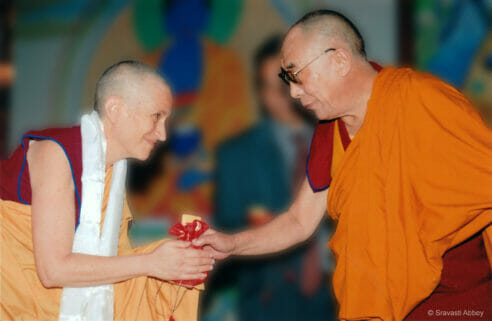
Venerable Thubten Chodron and His Holiness The XIV Dalai Lama of Tibet
Chodron continues, “So I went to his Holiness and requested that he write that, and he said ‘Oh, very good, but first, we have to write the long version’. And so, he sent me away with a transcript of a teaching he had given, I edited it, that was the start of the book.”
Venerable would collect questions from Westerners, transcribe talks, and be sent off to monasteries and libraries, for years at a time. “So the manuscript kept getting bigger and bigger” she laughs, “by this time it was 2,000 pages.”
The original idea of a “small book” has sprawled into ten large ones now known as The Library of Wisdom and Compassion book series. It’s a compendium of Buddhist teachings, the ninth volume entitled Appearing and Empty released this week.
Known for her depth, quick wit, and wide smile, Ven summarized each of the books for us.
1. Approaching The Buddhist Path
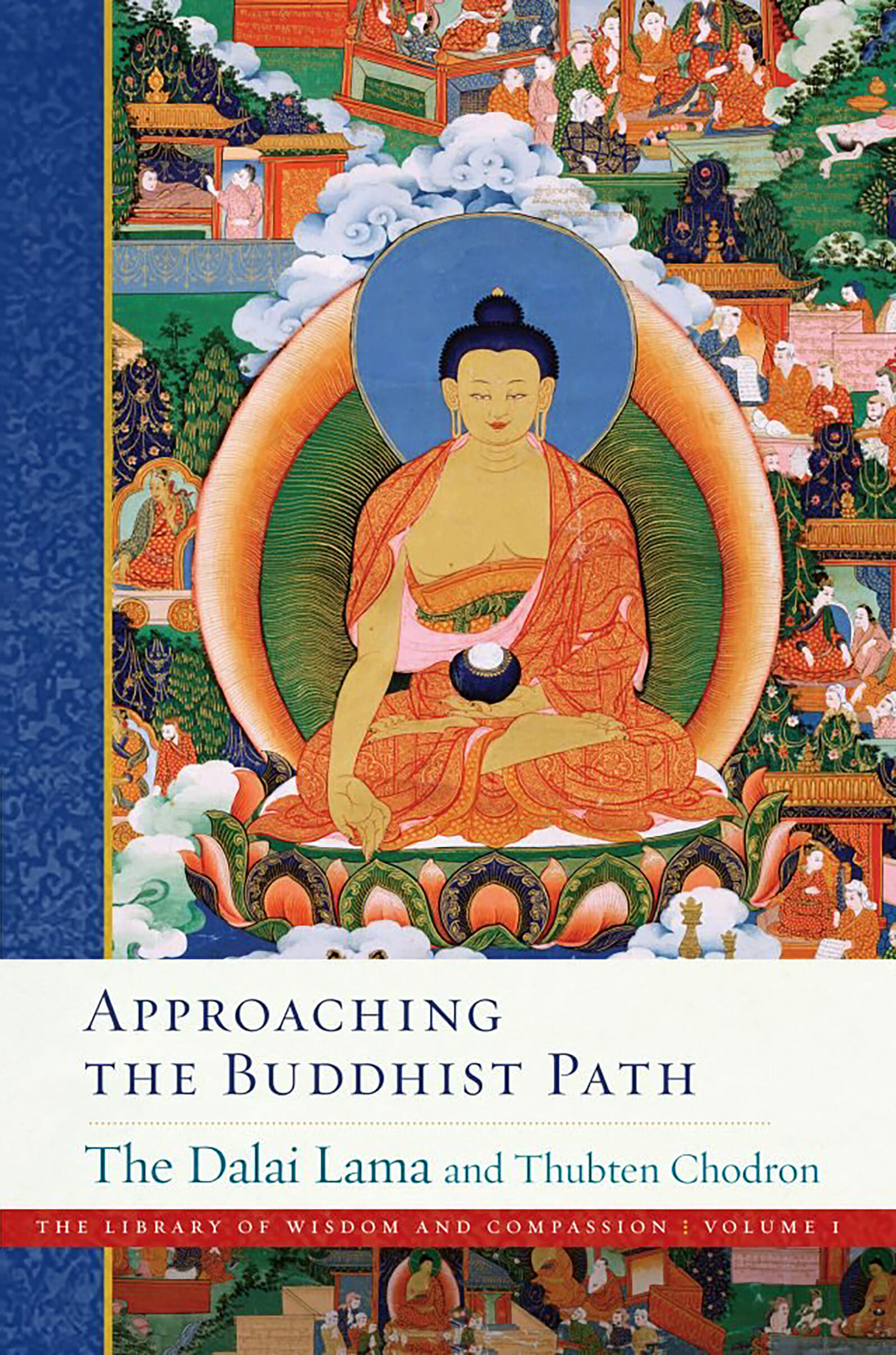
“When his Holiness starts teaching in the West, he goes on two planes. One plane is compassion and teaching everybody about the kind heart. The other plane that he gives to people in the West, because he says these are educated, intelligent people– is he starts talking about a cause and effect, and what we call the two truths; the conventional truth, the ultimate truth.
So in this first volume, we have a combination of talking about compassion, and service to society, how to help people here and now. So that’s volume one.”
2. The Foundation Of Buddhist Practice
“The Foundation Of Buddhist Practice talks more about rebirth, what is mind, the continuity of mind. It has a nice section about how to select spiritual teachers, the qualities to look for, and how to relate to spiritual teachers, because there’s been a lot of scandals. Here’s where His Holiness’s mind is so practical about; you have to check out people, you’re the one who determines if somebody’s one of your teachers or not. You have to look; do they have good ethical conduct? Do they have meditation experience? Do they teach the regular Buddhist path? Or are they making something up? How are they with their teachers? With their students?
Do they ask for a lot of donations? Or are they sincerely interested in their student’s path and helping them to attain awakening?
Then there’s a whole section also about karma, because Westerners are very interested, what is karma? How does it operate? And this whole thing about the idea of God who creates the world, and then either rewards them or punishes sentient beings, and how Buddhism is very different from that. So that’s the second volume.”
3. Samsara, Nirvana And Buddha Nature
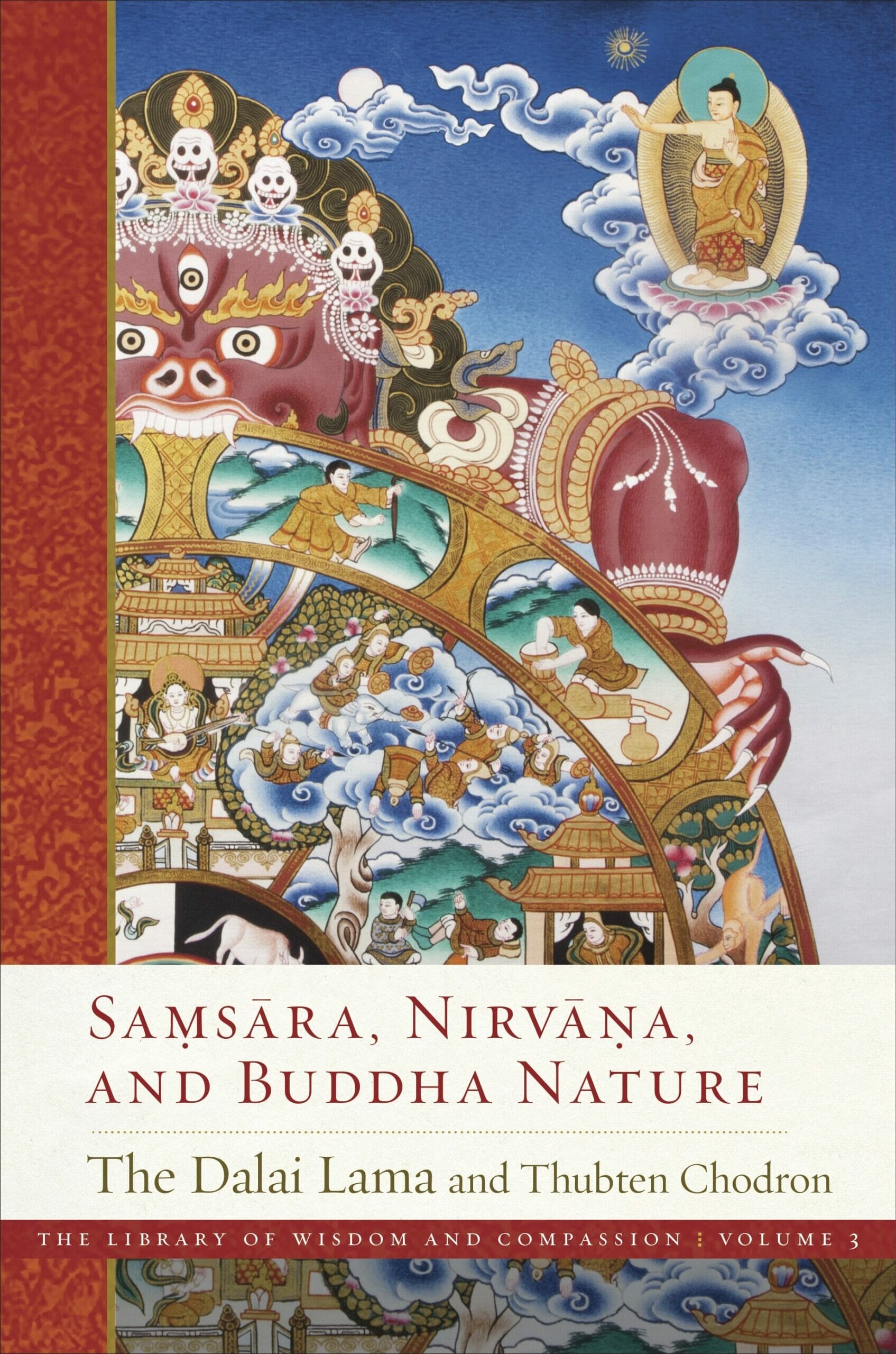
“The third is Samsara, Nirvana and Buddha Nature. So there we go into more depth about what is our present situation as beings who are afflicted by distorted concepts, and by unrealistic and disturbing emotions, and how does that create rebirth. Is taking one rebirth after the other really a happy occasion or not?
So here are the four truths; our present situation, what causes it, and then, the path, and what the result is the true cessation. It talks about Buddha nature because we all have the potential, we have incredible potential to really practice and get out of samsara. So that’s volume three.”
4. Following In The Buddha’s Footsteps
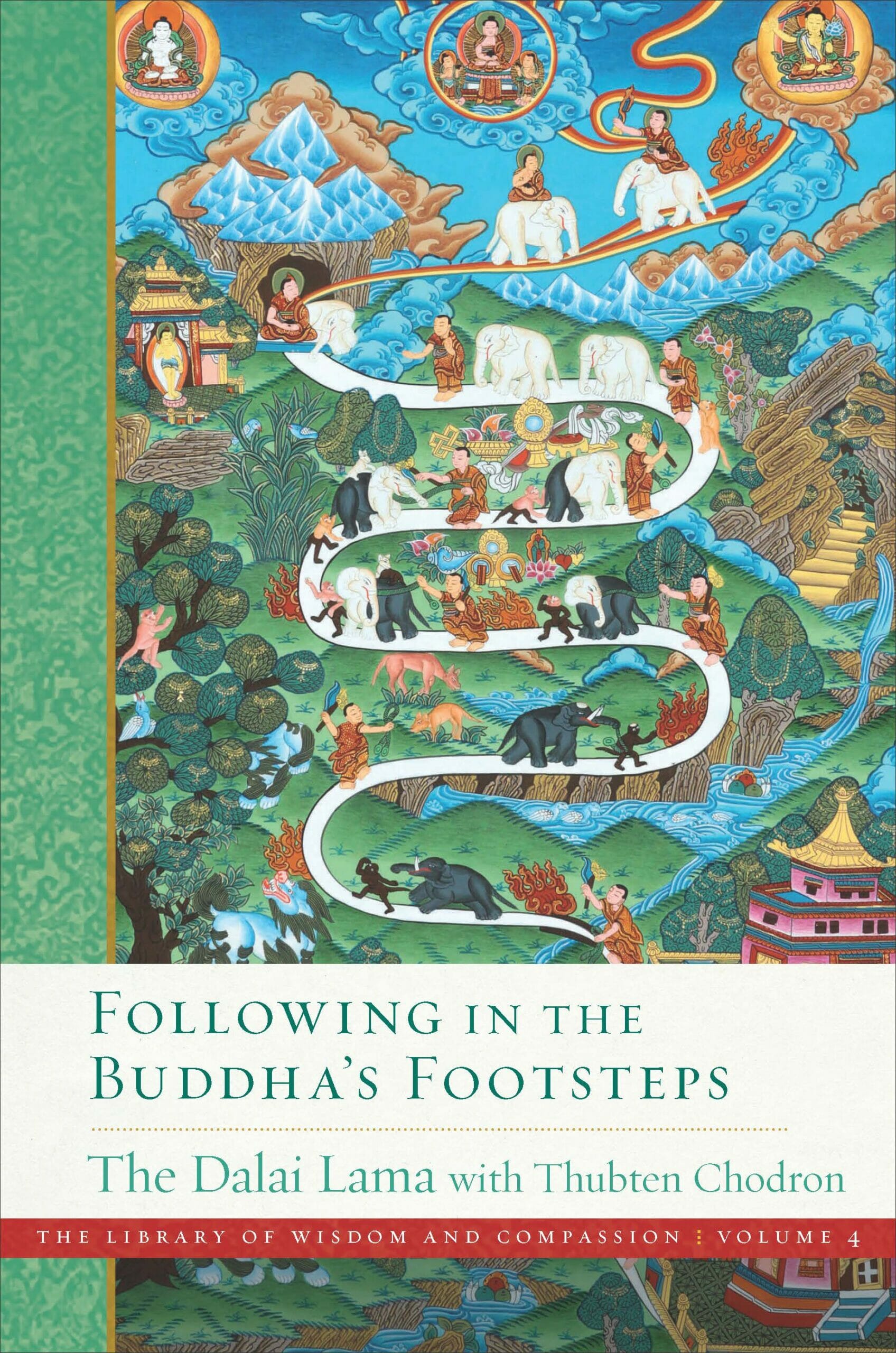
“Volume four is Following In The Buddha’s Footsteps. The first part is talking about refuge in the Buddha, dharma and sangha. What is the Buddha? Are there many Buddhas? What is the dharma? What are the sangha?
Second part of the book is going into the three higher trainings. So ethical conduct, how to develop concentration, and then wisdom. Okay, so that’s volume four.”
5. In Praise Of Great Compassion
“Volume five is one of my favorite volumes. I mean, the whole thing I love all the topics, but this one especially, it’s called In Praise of Great Compassion talks about what is compassion from a Buddhist perspective. So again, this is very different than secular compassion. Secular compassion, you feel sorry for somebody. Buddhist compassion, you don’t feel sorry for them. You want to help them alleviate their pain and their misery, but it isn’t oh, you poor little baby, let me save you, okay? Because in Buddhism, you can’t save anybody people have to practice and create the causes themselves.
Then it talks about how compassion is spoken of different traditions, it talks about how to develop compassion and so on, and it’s a beautiful book.”
6. Courageous Compassion
“Volume six is called Courageous Compassion. This is talking about once you’ve generated compassion, once you’ve generated Bodhicitta, the aspiration to become a Buddha in order to benefit other living beings, then what do you practice? So here it explains generosity, ethical conduct, a fortitude, as many people call that patience, I call it fortitude, because it means you have to have inner strength, yea..? Then joyous effort. So to have effort, you need to have joy. Then meditative stability, so your meditation practice and then wisdom.
The second part of the book talks about the paths and stages that bodhisattva’s practice. Bodhisattvas are those who are aspiring to become Buddhists for the benefit of all beings and have a certain level of realization of compassion and Bodhicitta. And how the path is for them, what kind of realizations they get at different levels of the path.
And it can be really inspiring if you have a sense of your Buddha nature and you think oh, if I keep practicing, not expecting to be Buddha by next Tuesday, or even 10 years from Tuesday. But if I have a long view and it’s going to take many lifetimes, I can actually attain these amazing states where I can, I have the compassion, the wisdom, the skillful means, the power to benefit others as much as I am capable of. So it talks about those stages of development.
So that’s volume six.”
7. Searching For The Self
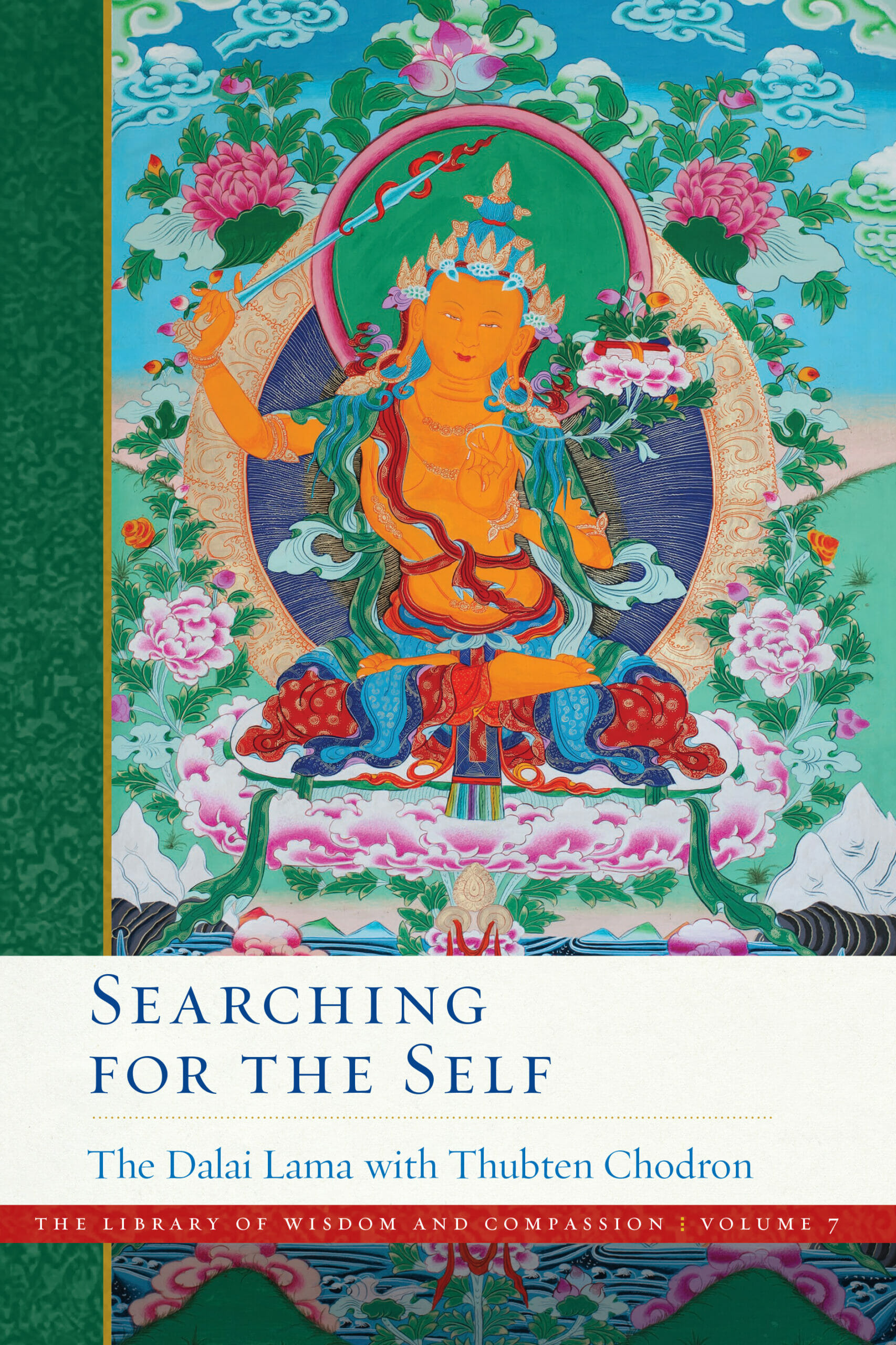
“Volume seven is called Searching For The Self, and volume seven, eight and nine are all about the nature of reality, emptiness, the lack of inherent existence. And how the ultimate nature and the conventional nature both exist. And you need to be able to posit both.
So Searching For The Self is a kind of like an introduction to emptiness. It talks about some of the different philosophical views of what selflessness or no self means, what emptiness means. Because there’s different views, Buddha taught different things to different people because it was his way of being skillful and teaching people according to their own level. It talks about that, and it talks about yes, just the realizations that they gain along the path.
So volume seven gives a lot of that introductory material. What is emptiness? What are the different philosophical views? Why do we study different views? How do they help us really realize the point of it? And how it doesn’t mean that nothing exists, and still exists.”
8. Realizing The Profound View
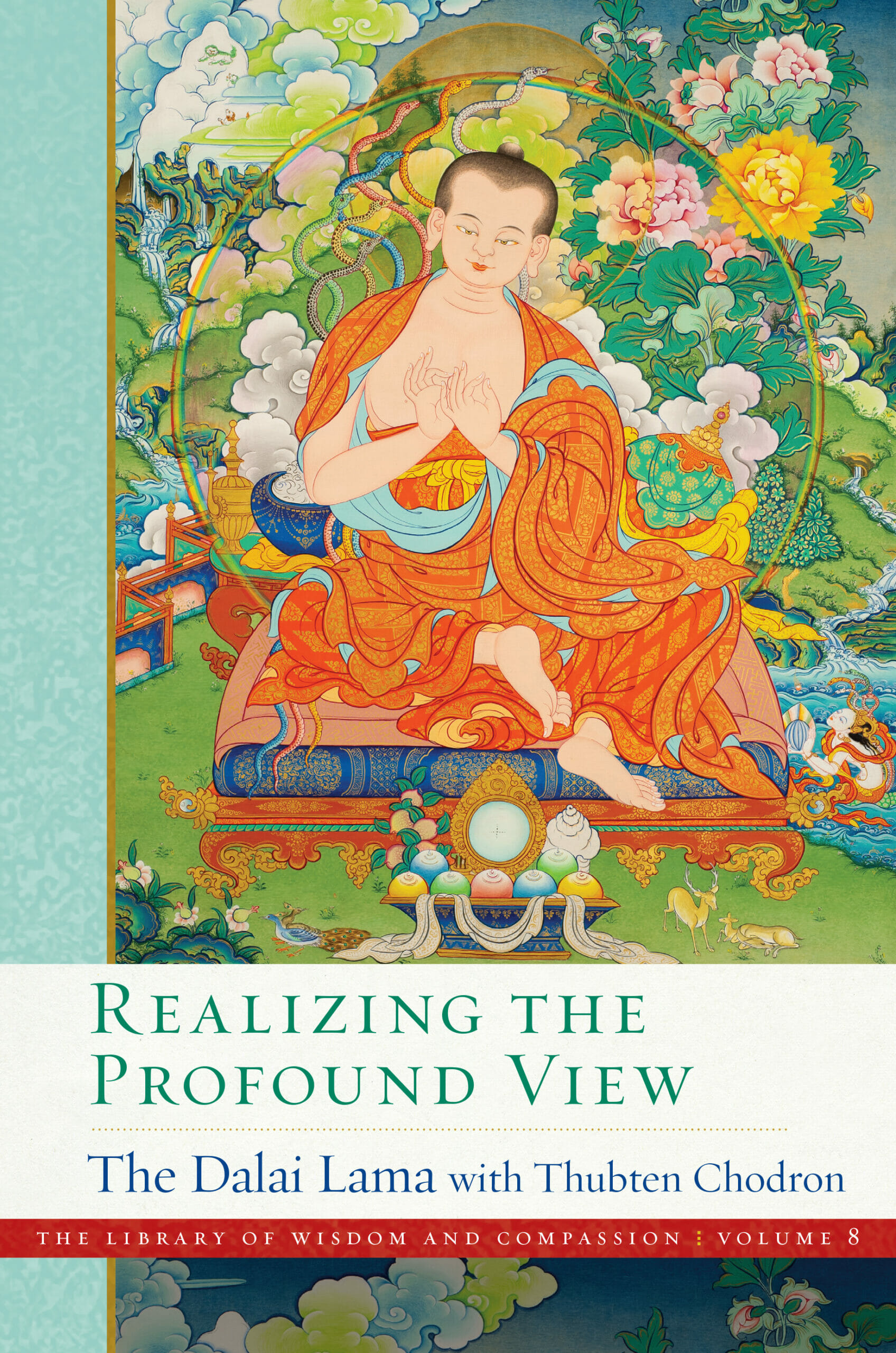
“Volume eight carries on from that, and it goes into a lot of the, what goes into the prominent arguments that are used to refute inherent existence. Because emptiness isn’t just close your eyes and empty your mind. If it would just get rid of all thoughts and empty your mind, then a cow would be enlightened. Because it doesn’t have a lot of conceptual thought. Maybe that’s why they say holy cow, I don’t know.
Realizing the nature of reality isn’t just blank-minded meditation, it’s not stopping our thoughts. It’s generating a very astute focused mind, that can really say here’s how I think things exist, can they actually exist in the way that I think they do?
So volume eight really gets into that, and really makes you look at well, how do I think things exist? And then, it also talks a lot about dependent arising, because we say on the ultimate level, which is analyzing how things exist, they lack any inherent nature. They are empty of inherent existence.
The more you understand emptiness and selflessness, the more you understand dependent nature. And this is like super profound. So that’s volume eight, and that’s the second of my favorite, most fun.“
9. Appearing And Empty
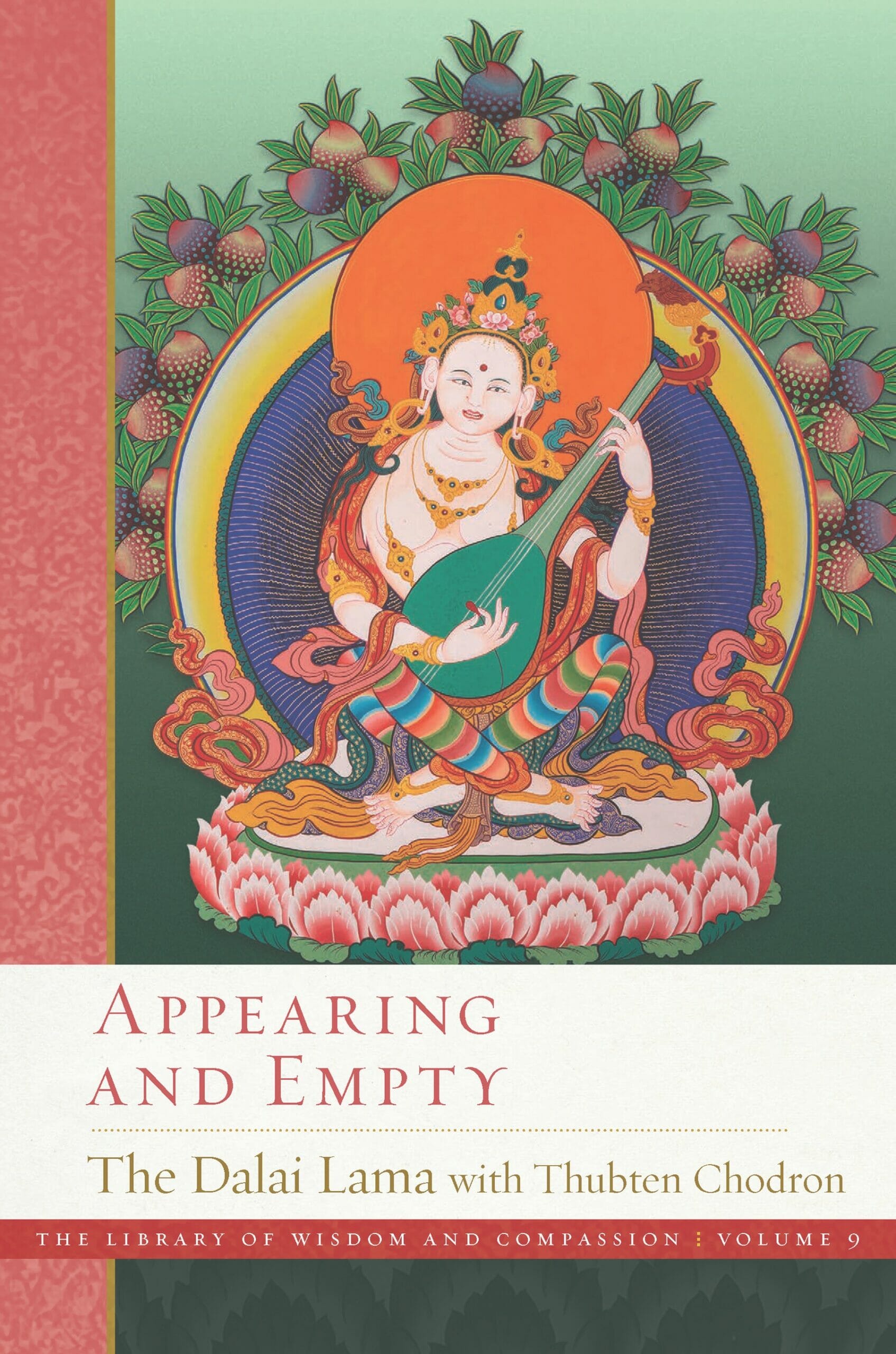
“Then volume nine, it continues on about emptiness. But here, we’re talking about what’s called the two truths. Okay, so the ultimate truth that things are empty of inherent existence, and the conventional truth or another way of saying it the veiled truth. Truth for somebody whose mind is ignorant, in other words, our minds. It doesn’t mean people who vote for the opposite.
All of our minds, even on the conventional level, we don’t perceive things accurately. We perceive them with the degree of accurateness and the sense that we can tell a car from a table, and we know if you plant carrot seeds, you get carrots.
So we can identify the things in our environment, we can work on a conventional level and have court cases, and all this kind of thing, but we don’t really, so that’s on the level of appearances. So that’s the first part of the title, appearing. But all these appearances that appear to exist out there from their own side, actually, are empty even here in existence.
In other word, they exist in relationship to our mind. They don’t have their own nature that makes them what they are. They depend on how we cognize them, and how we designate them. So that’s volume nine.”
The tenth and final volume will likely release next year.
Dharma In Action
When asked the benefits of this series for lay people, spiritual seekers and practiced Buddhists alike, Venerable responded, “What all this does is it softens our mind up, and it opens our mind up. So instead of wanting to put everything in a category, give it a label and then think we know everything about it. It’s calling us to be much more flexible, much more open-minded, much more realizing that every single person is a combination of well, every single organism I should say, is a combination of contradictory thoughts and contradictory emotions. So they’re all basically alike. So who’s the enemy? And who’s the friend?” A topic she regards as timely, as our country once again contends with the division and upheavel of her youth.
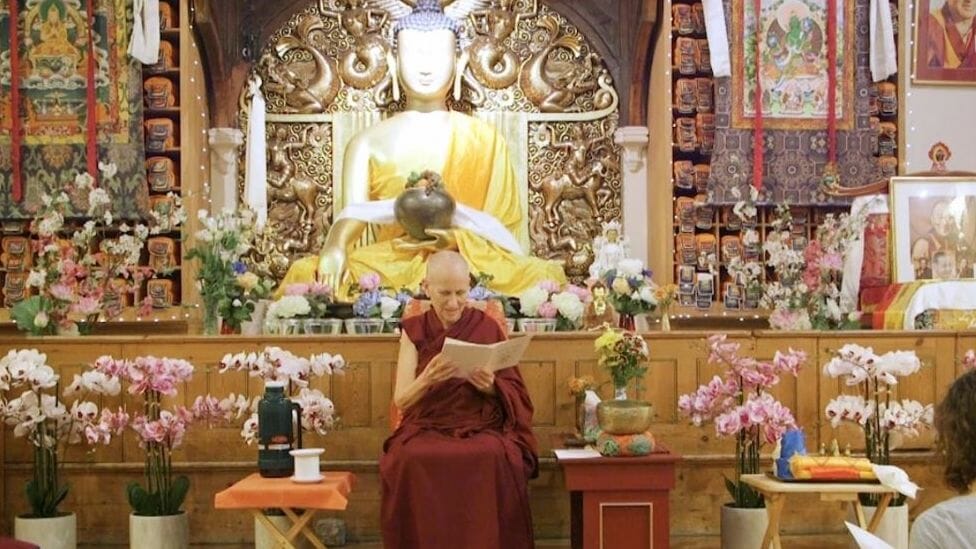
Venerable teaches at a Buddhist Center
Convictional Faith
These days, Venerable and her community are celebrating 20 years of Sravasti Abbey an American Buddhist monastic community on a 300-acre property in Washington State. Founded by Venerable (and her two cats) in 2003, Sravasti Abbey is now home to twenty-eight monastics who engage in dharma, community and service daily.
During a recent Q+A there someone asked about the concept of “faith,” Venerable responded; “In the West, when we use the word ‘faith’, we usually think ‘blind faith’. In Buddhism, faith means trust, confidence. And this convictional faith is really important because it’s through thinking about things, and coming to your own conclusion that then you say, ‘Oh, that makes sense, that’s how I’m going to act.”
The Library of Wisdom and Compassion
Appearing and Empty was released this week, and is now available through Wisdom Publications here.
The Library of Wisdom and Compassion book series is available through Wisdom Publications here.
To learn more about Venerable Thubten Chodron click here.
To learn more about Sravasti Abbey click here.
To Check Out Amy’s Work Go To; Sense + Color, You Can Reach Her At IG: Amy_V_Dewhurst + AmyVDewhurst@SenseAndColor.co #PutYourGoodWhereItWillDoTheMost

